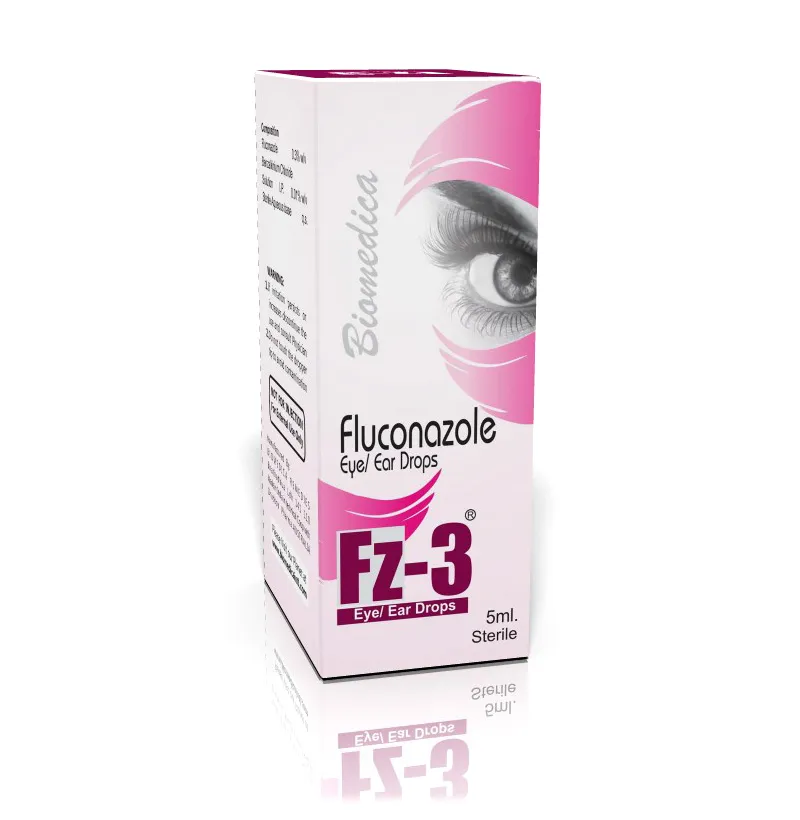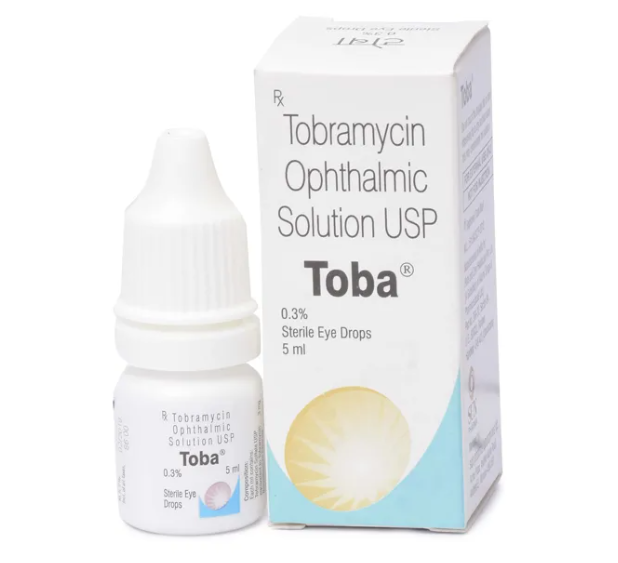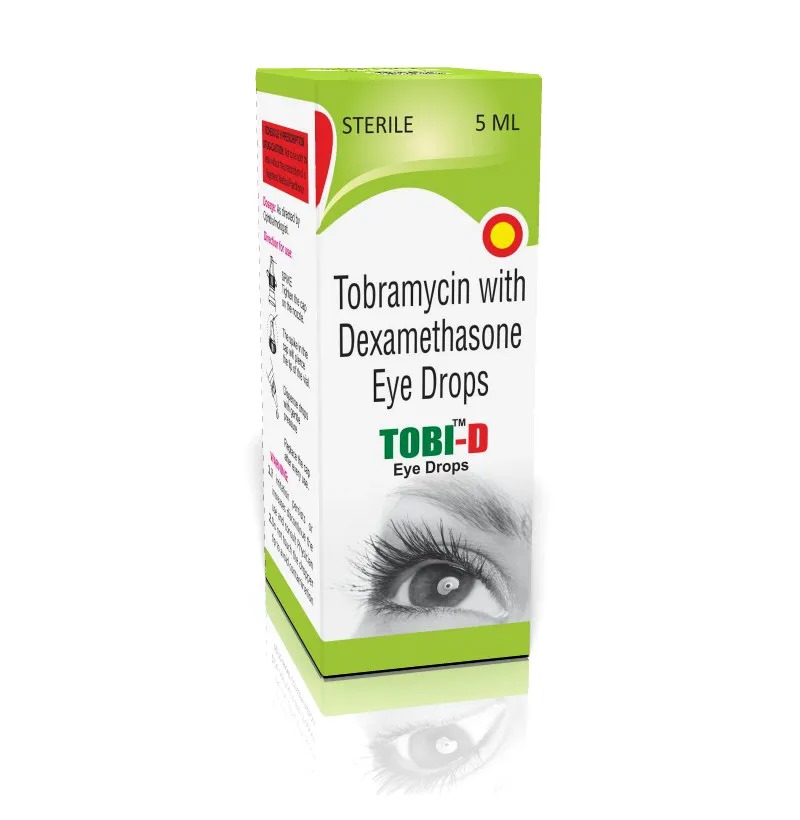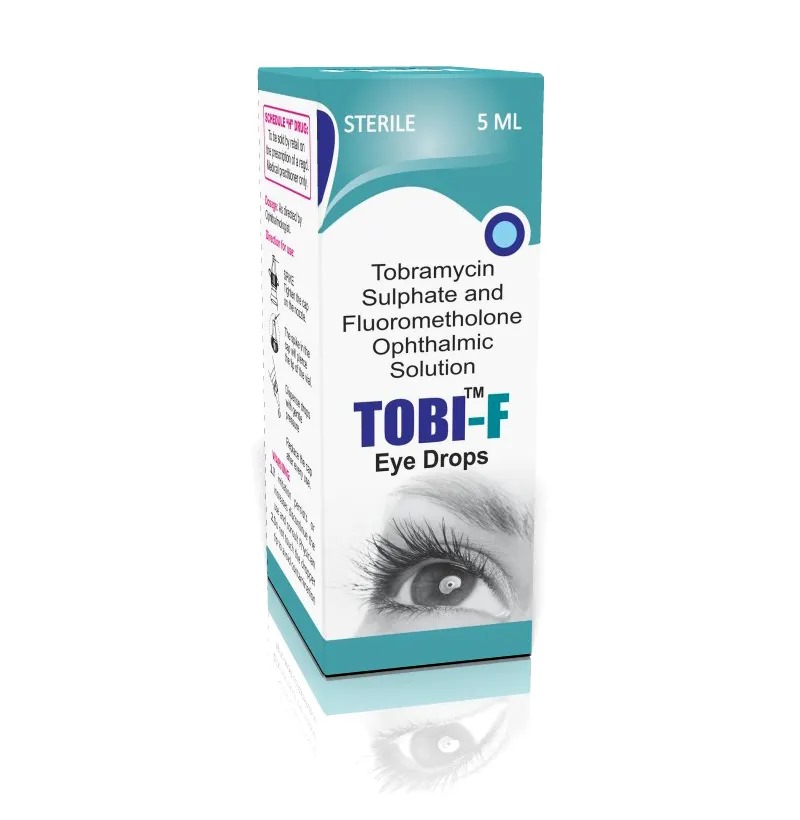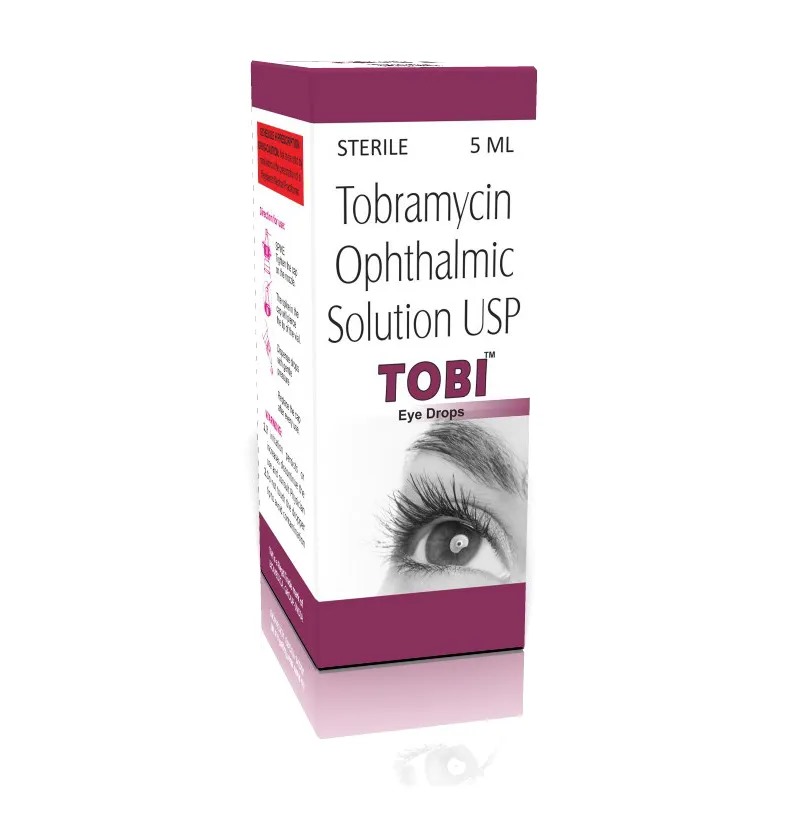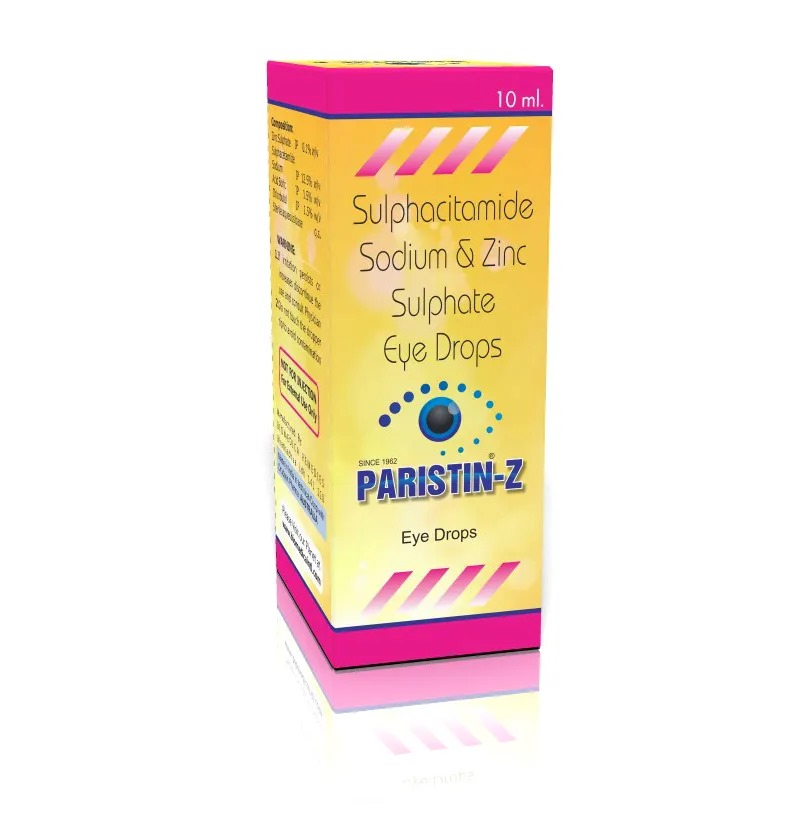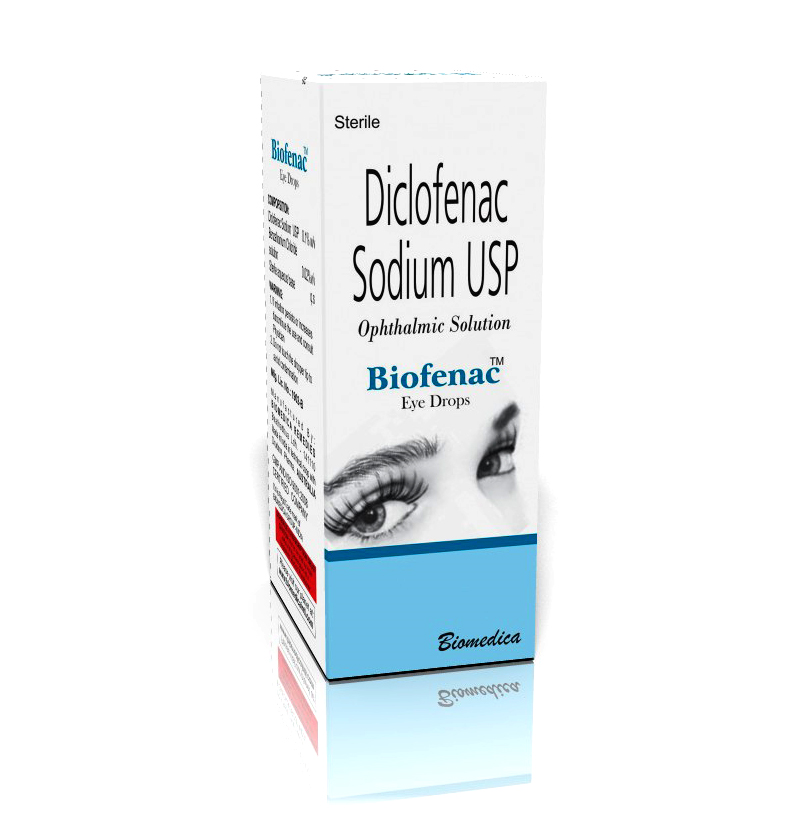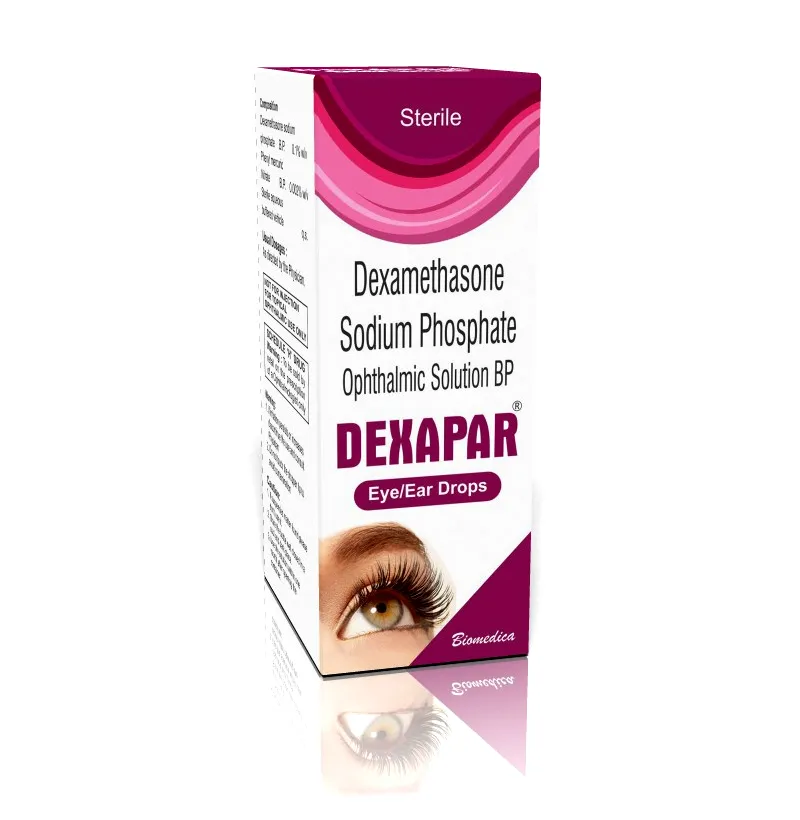FZ-3 Eye-Ear Drops containing Fluconazole are primarily used to treat fungal infections of the eyes and ears. Fluconazole is an antifungal medication that works by inhibiting the growth of fungi. 🔹 Primary Uses Fungal Eye Infections (Ophthalmic Fungal Infections) Fluconazole in eye drop form is used to treat fungal infections of the eye, such as fungal keratitis or endophthalmitis, which can cause inflammation, pain, and potentially lead to vision loss if left untreated. Fungal Ear Infections (Otomycosis) FZ-3 can be used for treating fungal ear infections, also known as otomycosis, which is often caused by fungi like Aspergillus or Candida. Symptoms include itching, pain, and discharge from the ear canal. 🔹 How It Works Fluconazole is an antifungal agent that works by inhibiting the fungal enzyme lanosterol 14α-demethylase, which is involved in the synthesis of ergosterol, an essential component of the fungal cell membrane. By blocking this enzyme, fluconazole disrupts the fungal cell membrane, leading to fungal cell death or inhibition of growth. ⚠️ Common Side Effects Eye: Mild eye irritation or burning sensation upon application Blurred vision (temporary) Redness or stinging in the eyes Ear: Mild ear irritation Ear itching or discomfort after application Temporary hearing changes (rare) If any of these side effects persist or worsen, consult your healthcare provider. 🔹 Usage Tips Dosage: Typically, 1–2 drops are applied to the affected eye or ear 2–3 times daily, as prescribed by your doctor. Application Instructions: Wash your hands thoroughly before applying the drops. For the eyes: Tilt your head back and gently pull down the lower eyelid to form a pocket. Instill the prescribed number of drops and gently close your eye for a few seconds. For the ears: Tilt your head to one side, apply the drops into the ear canal, and gently massage the ear to help the drops penetrate. If you are using other medications for the eyes or ears, wait about 5 minutes between applying each medication. Contact Lenses: If you wear contact lenses, remove them before applying the drops to avoid any contamination. You can reinsert your lenses after 15 minutes. 🔹 Precautions Allergies: If you have a known allergy to fluconazole or other azole antifungals, do not use the drops. Pregnancy and Breastfeeding: Fluconazole should be used with caution in pregnancy, particularly during the first trimester. Always consult your doctor if you are pregnant or breastfeeding. Underlying Conditions: Inform your healthcare provider if you have any liver or kidney diseases, as these conditions may affect how the medication works in your body. Systemic Absorption: Although FZ-3 is used topically, there is a possibility of systemic absorption. Monitor for any systemic side effects, especially with prolonged use.
Send Message